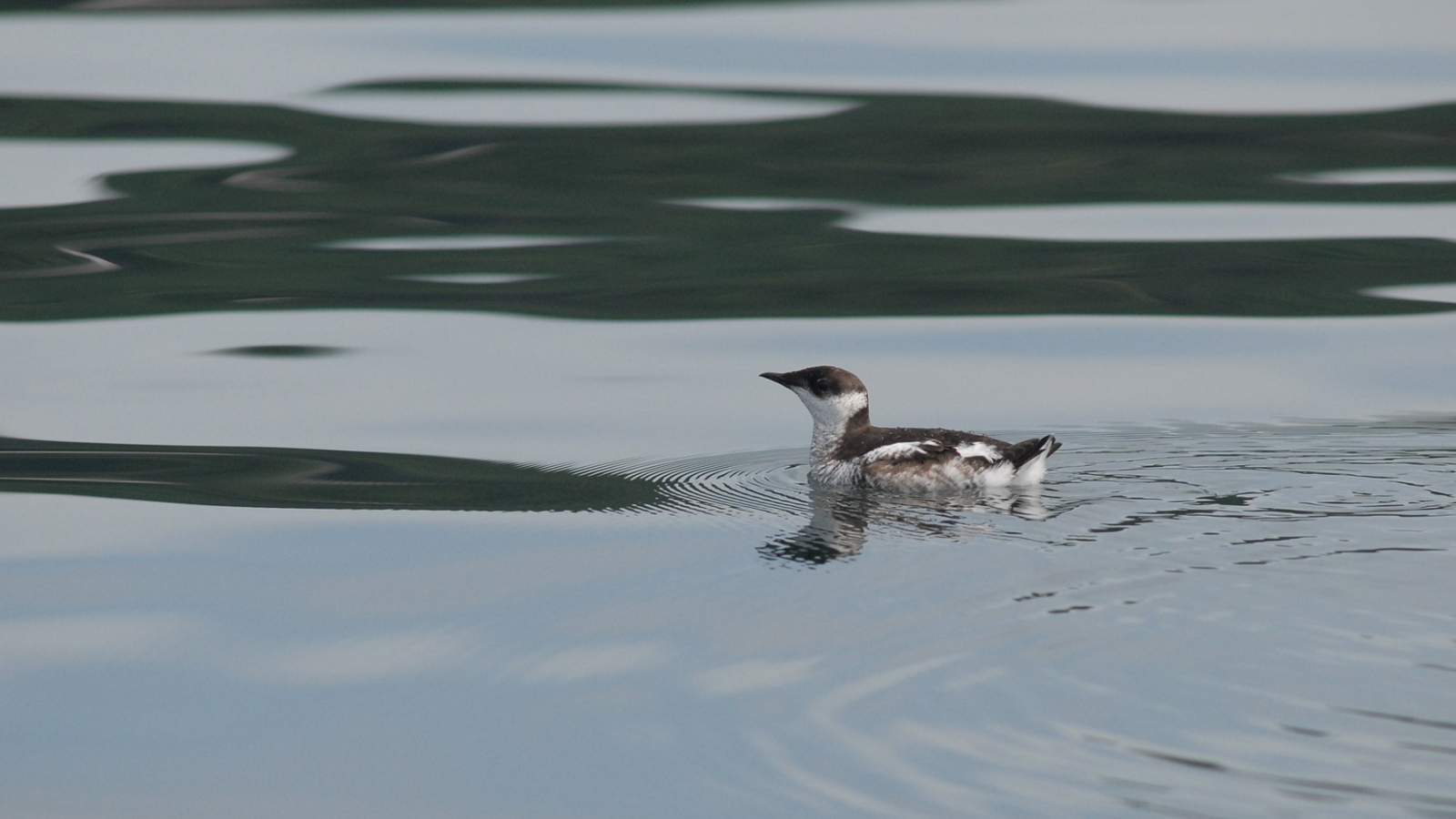For years, the nesting site of a seabird called the marbled murrelet was a mystery to scientists. It wasn’t until 1974, when a tree trimmer doing work after an unusual winter snowstorm found an odd-looking bird with webbed feet high up in a Douglas fir tree at Big Basin State Park.
That’s how scientists discovered that the now-endangered marbled murrelet flies inland from the ocean to lay a single egg high up on a large mossy branch in an old-growth tree and raises their chick. But because of logging and other habitat destruction, marbled murrelet populations have lost many of their natural nesting sites.
These seabirds nest in forests from early April to late September. Midpen staffers have detected these secretive birds in the preserves, albeit in small numbers. The one anomaly was in 2022, when Midpen biologist Karine Tokatlian detected large numbers of marbled murrelets in Purisima Creek Redwoods Open Space Preserve.
Video courtesy of the artist © Frans Lanting | BayofLife.net | Lanting.com
“After the 2020 CZU Lightning Complex fire burned a significant amount of their nesting habitat in nearby Big Basin State Park, we’re assuming that marbled murrelets have been redistributing to other areas,” Tokatlian said.
But 2023 was another quiet season for marbled murrelets in Purisima Creek Redwoods, based on surveys by Midpen staff.
Climate change is affecting marbled murrelets too, as they uniquely depend on both the ocean and forest ecosystems to survive. Though they nest in forests they spend most of their life at sea and eat fish, where changing ocean temperatures are affecting fish populations.
Midpen biologists began surveying the preserves for marbled murrelets in July to gather data for the 2024 nesting season.
One way we can all help marbled murrelets is to participate in the “Crumb Clean” campaign. Food waste and garbage generated by people in the forests where marbled murrelets nest attract jays, crows and ravens which are the main predators of marbled murrelet eggs and chicks. There are no trash cans in Midpen preserves. By practicing Leave no Trace principles and packing out everything you pack in to natural areas, even biodegradable items, you are helping to protect this fascinating and endangered seabird secretively nesting in our midst.

